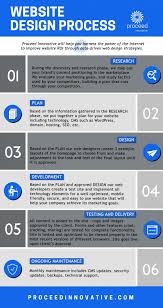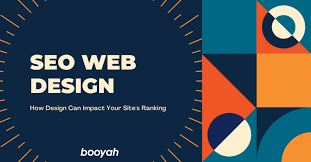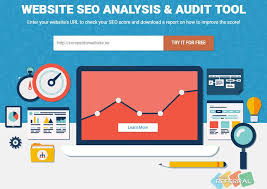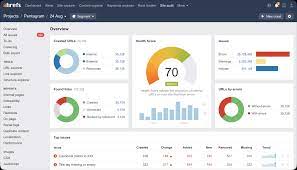Mastering Wix SEO: Enhance Your Website’s Visibility and Performance
The Importance of SEO for Your Wix Website
Wix is a popular website builder that allows individuals and businesses to create stunning websites with ease. While Wix provides a user-friendly platform for designing your site, one crucial aspect that should not be overlooked is Search Engine Optimization (SEO).
What is Wix SEO?
Wix SEO refers to the process of optimizing your Wix website to improve its visibility on search engine results pages (SERPs). By implementing effective SEO strategies, you can increase organic traffic to your site, attract more visitors, and ultimately grow your online presence.
Key Elements of Wix SEO
When it comes to optimising your Wix website for search engines, there are several key elements to consider:
- Keywords: Conduct keyword research to identify relevant terms and phrases that your target audience is searching for. Incorporate these keywords naturally into your website content.
- Meta Tags: Optimise meta titles and descriptions for each page on your site to provide search engines with relevant information about your content.
- URL Structure: Create clean and descriptive URLs that include keywords related to the page’s content.
- Mobile-Friendly Design: Ensure that your Wix website is responsive and mobile-friendly, as Google prioritises mobile-friendly sites in its search rankings.
- Quality Content: Publish high-quality, engaging content that is valuable to your audience and encourages them to spend more time on your site.
- Backlinks: Build backlinks from reputable websites to improve your site’s authority and credibility in the eyes of search engines.
The Benefits of Optimising Your Wix Website for SEO
By investing time and effort into implementing effective SEO strategies on your Wix website, you can enjoy a range of benefits, including:
- Increase in Organic Traffic: Higher search engine rankings lead to increased visibility and more organic traffic to your site.
- Better User Experience: Optimised websites provide a seamless user experience, leading to higher engagement and lower bounce rates.
- Growth in Online Authority: Improved SEO can help establish your website as an authority in its niche, attracting more visitors and potential customers.
- Increase in Conversions: Targeted SEO efforts can drive qualified leads to your site, resulting in higher conversion rates and improved ROI.
In Conclusion
In conclusion, incorporating effective SEO strategies into your Wix website is essential for maximising its online visibility and attracting more visitors. By focusing on key elements such as keywords, meta tags, mobile-friendliness, quality content, and backlinks, you can enhance your site’s performance on search engine results pages. Unlock the power of Wix SEO today and watch your online presence soar!
Top 9 Frequently Asked Questions About Enhancing SEO on Wix
- What is Wix SEO and why is it important?
- How can I improve the SEO of my Wix website?
- Does Wix have built-in SEO features?
- Is it necessary to hire an SEO expert for my Wix site?
- What are the key elements of on-page SEO for Wix websites?
- Can I track the performance of my Wix website’s SEO?
- Are there any limitations to SEO on a Wix platform?
- How long does it take to see results from Wix SEO efforts?
- Does upgrading to a premium plan on Wix improve SEO?
What is Wix SEO and why is it important?
Wix SEO refers to the process of optimising a website built on the Wix platform to improve its visibility and ranking on search engine results pages. It involves implementing various strategies such as keyword research, meta tags optimisation, mobile-friendly design, quality content creation, and backlink building. Wix SEO is important because it helps businesses attract more organic traffic, increase online visibility, establish authority in their niche, enhance user experience, and ultimately drive conversions. By focusing on Wix SEO, businesses can effectively reach their target audience and grow their online presence in a competitive digital landscape.
How can I improve the SEO of my Wix website?
To enhance the SEO of your Wix website, there are several key steps you can take. Firstly, conducting thorough keyword research to identify relevant terms for your content is crucial. Incorporating these keywords strategically throughout your website’s content, meta tags, and URLs can significantly boost its visibility on search engine results pages. Additionally, ensuring your Wix site is mobile-friendly, publishing high-quality and engaging content regularly, and building reputable backlinks are essential tactics to improve SEO performance. By focusing on these aspects and staying updated on SEO best practices, you can effectively enhance the search engine optimisation of your Wix website and attract more organic traffic.
Does Wix have built-in SEO features?
When it comes to the frequently asked question, “Does Wix have built-in SEO features?” the answer is a resounding yes. Wix provides users with a range of built-in SEO tools and features that make it easier to optimise their websites for search engines. From customisable meta tags and URLs to mobile-responsive design options and integrated Google tools, Wix offers a comprehensive suite of SEO capabilities. Users can easily edit meta titles, descriptions, and alt text, as well as generate sitemaps and robots.txt files directly within the platform. With Wix’s intuitive interface and SEO-friendly templates, users can effectively enhance their website’s visibility and ranking on search engine results pages.
Is it necessary to hire an SEO expert for my Wix site?
When considering whether to hire an SEO expert for your Wix site, it ultimately depends on your level of expertise and the goals you have for your website. While Wix provides tools and resources to help you implement basic SEO practices, an SEO expert can offer advanced knowledge and strategies to enhance your site’s visibility and performance on search engines. If you are looking to maximise your site’s potential, improve rankings, and attract more organic traffic, investing in an SEO expert could prove beneficial in achieving these objectives effectively and efficiently.
What are the key elements of on-page SEO for Wix websites?
When it comes to on-page SEO for Wix websites, several key elements play a crucial role in optimising your site for search engines. These elements include strategically incorporating relevant keywords throughout your content, optimising meta tags such as titles and descriptions for each page, structuring URLs with descriptive keywords, ensuring a mobile-friendly design for improved user experience, creating high-quality and engaging content that resonates with your audience, and building backlinks from reputable sources to enhance your site’s authority and credibility. By focusing on these key elements of on-page SEO, you can effectively boost your Wix website’s visibility on search engine results pages and attract more organic traffic to your site.
Can I track the performance of my Wix website’s SEO?
Tracking the performance of your Wix website’s SEO is crucial for monitoring the effectiveness of your optimization efforts. Wix provides users with built-in tools and integrations that allow you to track key metrics such as organic traffic, keyword rankings, backlink profiles, and more. By utilising tools like Google Analytics and Wix SEO Wiz, you can gain valuable insights into how well your website is performing in search engine results. Regularly monitoring these metrics enables you to identify areas for improvement, refine your SEO strategies, and ultimately enhance the visibility and success of your Wix website online.
Are there any limitations to SEO on a Wix platform?
When considering SEO on a Wix platform, it is important to be aware of certain limitations that may impact your search engine optimisation efforts. While Wix provides users with tools and features to optimise their websites for search engines, some limitations include restrictions on advanced customisation options, limited control over certain technical aspects such as server-side configurations, and potential constraints on website speed optimisation. Despite these limitations, with strategic planning and adherence to best SEO practices within the framework provided by Wix, it is still possible to achieve significant improvements in your website’s search engine visibility and performance.
How long does it take to see results from Wix SEO efforts?
When it comes to Wix SEO efforts, the timeframe to see tangible results can vary depending on various factors such as the competitiveness of your industry, the quality of your content, and the consistency of your SEO strategies. Generally, it may take a few weeks to several months before you start noticing significant improvements in your website’s search engine rankings and organic traffic. Patience is key when it comes to SEO, as it is a continuous process that requires ongoing monitoring, adjustments, and refinement to achieve long-term success. By staying committed to implementing effective SEO practices and regularly analysing performance metrics, you can gradually see the positive impact of your Wix SEO efforts on your online visibility and overall digital presence.
Does upgrading to a premium plan on Wix improve SEO?
When it comes to the frequently asked question of whether upgrading to a premium plan on Wix improves SEO, the answer lies in understanding the additional features and benefits that come with a premium plan. While upgrading to a premium plan can provide access to advanced SEO tools, such as custom meta tags and structured data, which can positively impact your site’s search engine visibility, it is important to note that simply upgrading your plan does not guarantee automatic improvement in SEO. Effective SEO requires a holistic approach that encompasses quality content, relevant keywords, mobile-friendliness, and other key elements. Upgrading to a premium plan on Wix can certainly offer valuable tools to enhance your SEO efforts, but it should be complemented with a strategic SEO strategy tailored to your website’s specific needs for optimal results.







